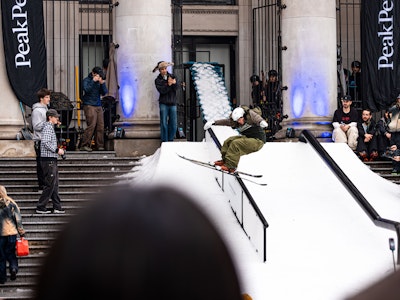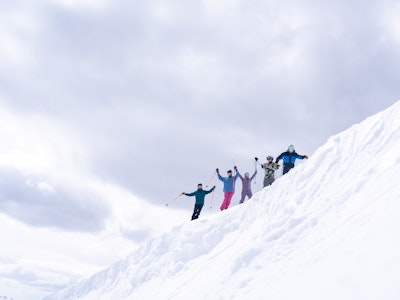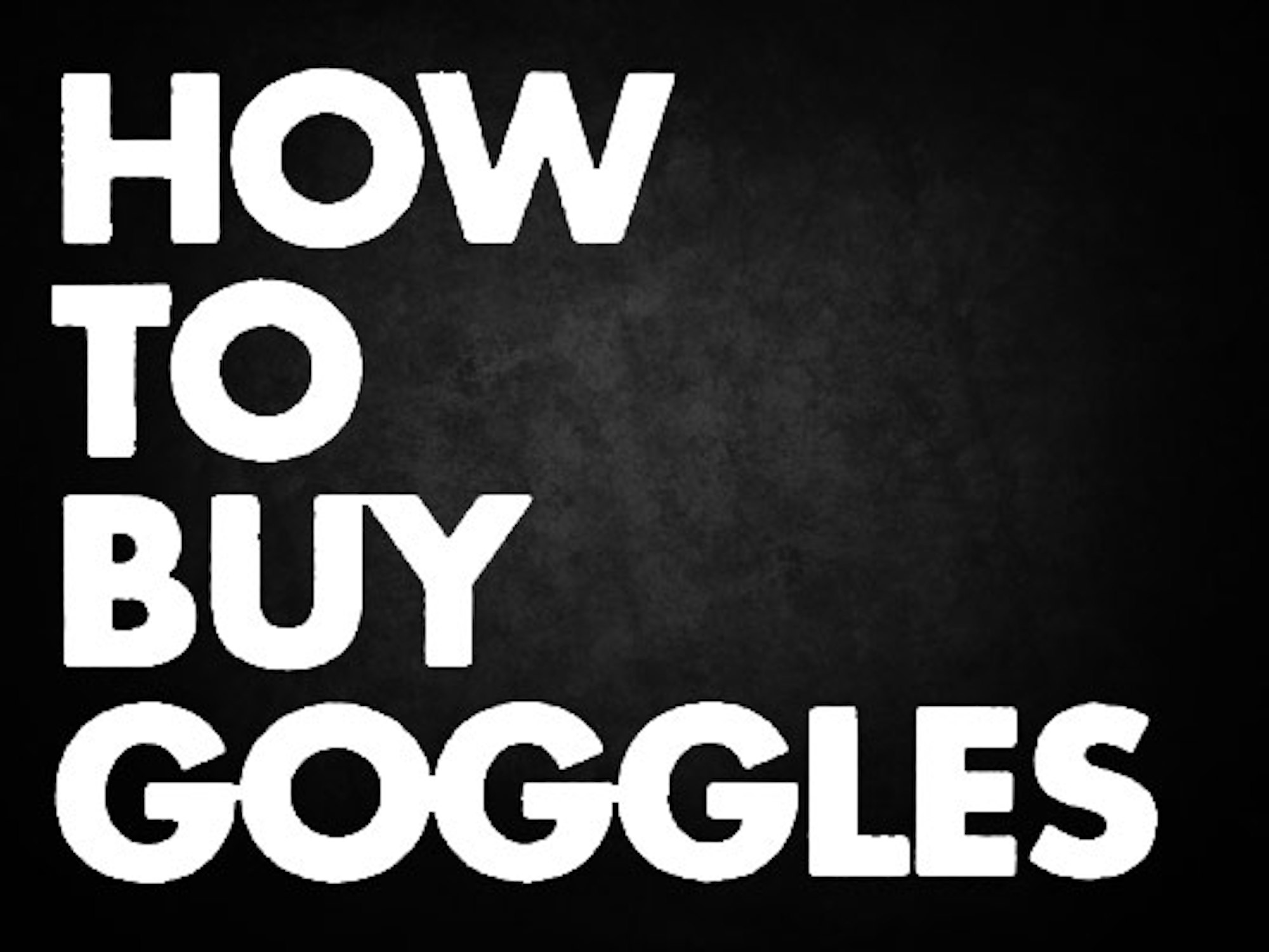Ski goggles are the window to the skiing world. They’re categorized as an accessory, but they are an essential piece of your kit. Since all goggles offer protection from the wind and cold, there is a litany of choices to be made when finding the right one when you’re looking to buy ski goggles, at the right price, for you.
Be sure to read our 2012/2013 goggle reviews right here.
Spherical Lenses versus Cylindrical Lenses
Goggle lenses come in two basic forms: spherical and cylindrical (commonly referred to as flat). Spherical lenses are curved on both axes, while cylindrical lenses appear flat vertically but curved horizontally.
The difference boils down to two things: optical quality and goggle volume. Many companies mold-inject spherical lenses, a process that allows for full lens tapering, in which the plastic gets thinner the further it is from the center of the lens. With tapering, the peripheral light travels the same distance to your eye as the central light, resulting in better optical performance. Lens tapering is possible in flat lenses but only on one axis. “It comes down to optics,” says Tag Kleiner, the director of marketing at Smith Optics. “If you’re able to inject a spherical lens and get better optical performance, it’s a better lens.”
The second difference is volume, which makes a difference in the fogging department. “Spherical lenses increase the interior chamber volume in the goggle, which helps with fogging,” explains Kleiner. Cylindrical-lensed goggles, by virtue of their shape, have less interior volume that leads to more fogging.
However, all those benefits come with a price. “Spherical will be more expensive, but it’s a better lens,” says Kleiner. “If there is a drastic quality difference, there will be a drastic price difference.”
How Many Lenses do you Need?
Whether you go with a spherical or cylindrical lens, you’ll be faced with a decision about how many extra lenses, if any, to purchase. Sure, extra lenses mean more cash to pony up, but the right lens for the conditions is worth a little extra money. You wouldn’t shred BC pow on skinny skis or moguls on your rockered fatties.
No lens can provide optimal visibility and comfort across all weather and lighting conditions. “You could theoretically use a darker lens tint in thick fog, but you’re not going to see very well,” says Andy McSorley, Oakley’s global category manager for goggles. “Conversely, you could use a light lens tint on a bright sunny day, but your retinas will be scorched and may cause damage to your eyes.” And if you don’t have perfect vision, lens choice is an even more integral part of the equation. “For those with less-than-perfect vision, the correct lens tint is even more critical because there’s a reduced amount of inherent visibility for you to work with already,” he says. “Compounding your slightly fuzzy vision with the wrong lens tint is just salt in the wound.”
Extra lenses are expensive, but no need to go buy five or six right off the bat. “You’re going to want a lens suitable for low light or foul weather and one lens for bright sunny conditions,” says McSorley. “Orange base tints are a good choice in snowy weather and are pretty versatile as well. On the other end of the spectrum, you’ll want a mirrored lens to knock down bright light and protect against those harsh rays in bluebird conditions. A third lens tint is a good call for the more avid skier to enhance visibility and comfort in those in-between conditions where lighting varies. But make sure you have the far ends of the spectrum covered first.”
Quick Changing Lens Systems
Since having multiple lenses is an important piece of the puzzle, many goggle companies have come up with ingenious ways to make the hassle of swapping lenses easier. From magnets to toggles to release levers, almost every company offers a faster way to swap lenses. “As we all know, lighting conditions can change pretty dramatically,” says Trevor Moore, product manager at anon. “A quick lens-change technology makes it fast and effortless to swap out a lens to adapt to any lighting situation.”
Many of the upsides of quick-changing lens systems are merely a superficial convenience, but “if it’s snowing, the longer it takes to change a lens, the more chance that you will get moisture in your goggle, leading to fogging, which can definitely ruin your day,” says Moore.
Is a quick-changing lens system a must-have? No. But if you’d rather spend your time skiing than fussing with your goggles, a better lens-change system will improve your day.
Polarization
What the heck does a polarized lens do? “It’s awesome,” says Carl Walker, marketing specialist at Zeal Optics. “It cuts the glare from the sun almost completely so that you can see better no matter what the conditions. While a mirror can reduce glare by 10 to 20 percent at best, quality polarization will reduce 99 percent of glare.” Beyond cutting glare, polarized lenses increase contrast and definition, so you’ll find reduced eye fatigue after a day on the hill.
The question isn’t whether or not polarized lenses are beneficial; it’s a question of how quality your polarization is. A ton of elements go into producing a polarized lens leaving a large price and quality gap between products. “Sure, you can get a cheap polarized lens from someone, but they are cutting a lot of corners to get there,” says Walker. “It’s kind of like a cheeseburger. You can have a Double-Double at In-N-Out, or you can have a 99-cent burger from McDonald’s. To the consumer, both are burgers, but one is definitely better. That’s kind of how it works with lenses. There are a ton of lower-end polarized options but only a few premium polarized suppliers in the world.”
While polarized lenses are not a must-have item, their benefits are undeniable. If you decide to purchase polarized, don’t go cheap.
Helmet Compatibility
Today, if you’re going to wear a helmet, you’ll need to think about helmet-to-goggle interface. Considering both technical and aesthetic repercussions, you’ll want to make sure you research how the goggle you’re buying fits with your helmet. “Even if you don’t buy a goggle and helmet from the same brand, you should try them on before you make the purchase,” says Bob Scales, senior brand manager at Giro. More than fixing gaper gap, helmets and goggles designed to work in harmony will provide maximum ventilation and comfort.
Big versus Small Frames
Goggles have been trending bigger for the past few years because larger goggles provide a greater field of view, giving you less-obstructed vision. “Who’d rather see the inside of the goggle frame than the hill or hazards off to the side,” says Josh Hartley, goggle and eyewear manager for Electric Visual. “Oversized lenses don’t just extend one’s view horizontally, they provide greater vertical vision as well. When you’re skiing, you’re often crouched, so to see directly ahead, you’re actually looking up to a degree. By increasing the lenses vertically, you no longer have frame in your field of vision. For those who do tricks that require careful tracking to land cleanly, the absence of frame in their view is very helpful.”
But simply making a goggle bigger isn’t an easy task. “When we started designing the EG2 goggle in 2005, our intention was just [to make it bigger]. Simple,” explains Hartley. “It took us two years of intensive R & D to overcome the obstacles posed by the larger lens: increased wind turbulence, greater reflective surface area on the inside and engineering an optically correct lens at that scale.”
Ever since the folks at Electric overcame the technical issues, goggle companies have been following suit, with almost every major manufacturer producing a supersized option.
The only downside is aesthetics. To assuage some trepidation that smaller-proportioned buyers might have, companies are introducing slightly smaller versions, like Electric’s EG2.5. You can go small if you want, but when picking a frame, don’t shy away from the frame that seems too large, it might just be your best bet.
Ready to shop? Read our 2012/2013 goggle reviews right here.

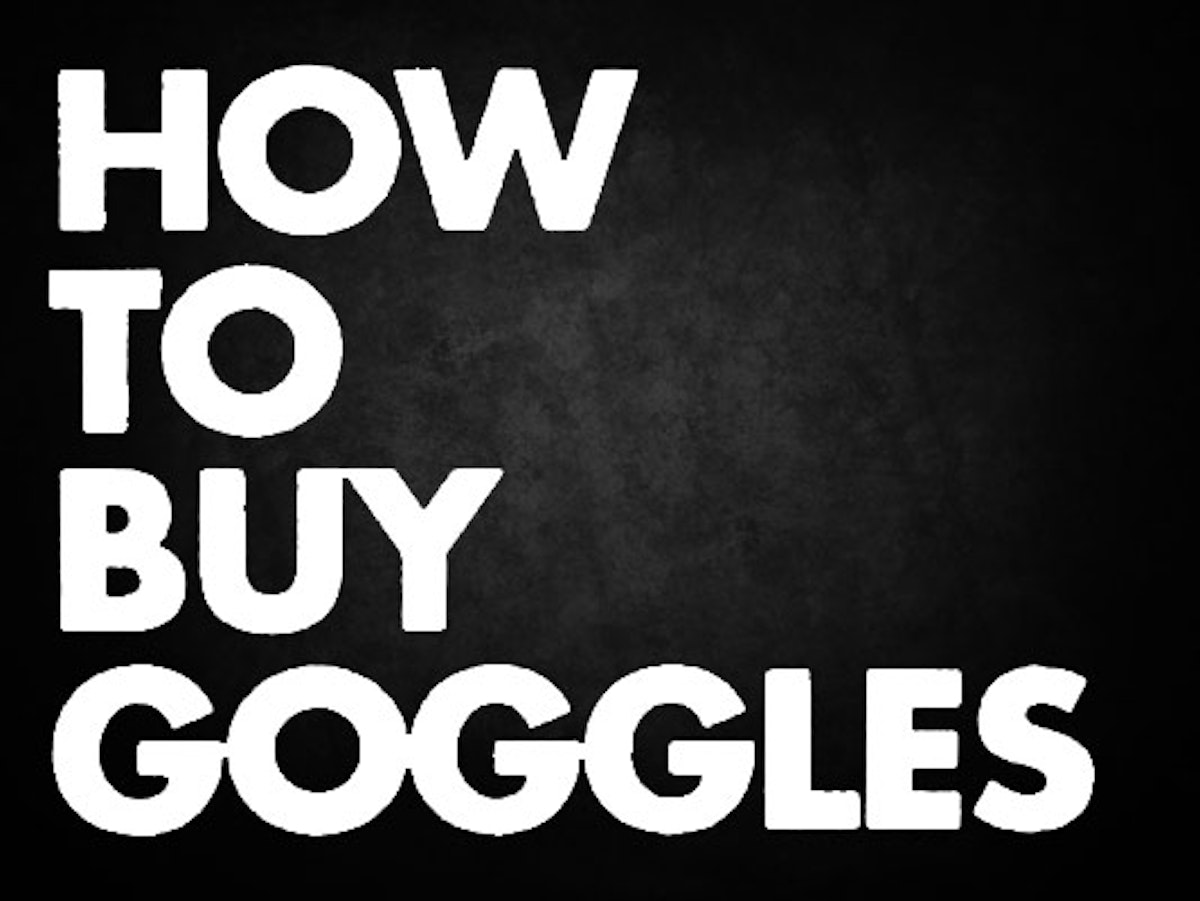
![[GIVEAWAY] Win a Legendary Ski Trip with Icelantic's Road to the Rocks](https://www.datocms-assets.com/163516/1765233064-r2r26_freeskier_leaderboard1.jpg?w=200&h=200&fit=crop)
![[GIVEAWAY] Win a Head-to-Toe Ski Setup from IFSA](https://www.datocms-assets.com/163516/1765920344-ifsa.jpg?w=200&h=200&fit=crop)

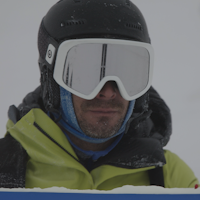
![[GIVEAWAY] Win a Legendary Ski Trip with Icelantic's Road to the Rocks](https://www.datocms-assets.com/163516/1765233064-r2r26_freeskier_leaderboard1.jpg?auto=format&w=400&h=300&fit=crop&crop=faces,entropy)


![[GIVEAWAY] Win a Head-to-Toe Ski Setup from IFSA](https://www.datocms-assets.com/163516/1765920344-ifsa.jpg?auto=format&w=400&h=300&fit=crop&crop=faces,entropy)


